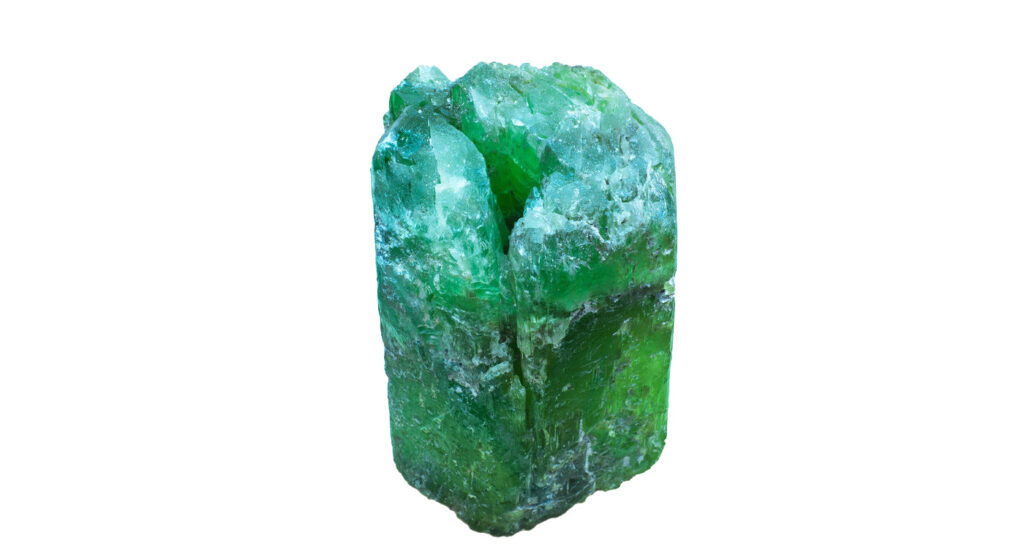Jadeitový kameň, or jadeite, has captivated cultures across the globe for centuries. This exquisite gemstone is not just a pretty face; it carries deep historical significance and cultural meanings that vary from one civilization to another. Whether you’re drawn to its vibrant colors or intrigued by its fascinating properties, jadeite holds a special place in the world of gemstones.
From ancient rituals to modern jewelry design, this stone continues to inspire artisans and collectors alike. But what makes jadeite so unique compared to its counterpart nephrite? And how can you ensure your jadeite pieces remain stunning for years? Dive into the world of jadeitový kameň as we explore its rich history, remarkable properties, and much more!
The History and Origins of Jadeite
Jadeite has a storied past that dates back thousands of years. Its origins can be traced to the lush mountains of Myanmar, where it was first discovered and cherished by ancient civilizations.
The stone held significant cultural importance for the Chinese, often symbolizing purity and moral integrity. It became a staple in royal adornments, with emperors donning jadeite as an emblem of power and prestige.
In Mesoamerica, jadeite took on different meanings. The Olmecs, Maya, and Aztecs revered this stone as sacred. They crafted intricate ceremonial objects from jadeite that played crucial roles in their spiritual practices.
As trade routes expanded over time, jadeite spread across continents. Today, it continues to be celebrated not only for its beauty but also for its rich tapestry of history woven through diverse cultures worldwide.
Differences Between Jadeite and Nephrite
Jadeite and nephrite often get confused, but they are distinct gemstones with unique characteristics. Jadeite is rarer and more valuable than its counterpart. It comes in a variety of colors, including green, lavender, yellow, and black.
Nephrite tends to be more opaque and usually presents in shades of green or brown. Its texture is also different; nephrite generally has a waxy feel while jadeite can appear glassier.
Another key difference lies in their composition. Jadeite is a sodium aluminum silicate mineral, whereas nephrite consists of calcium magnesium iron silicate.
The durability of these stones varies as well. While both are tough, jadeite ranks higher on the Mohs scale due to its crystalline structure.
These distinctions make each stone special for specific applications in jewelry and art. Understanding them helps collectors appreciate the beauty found within each type.
Properties and Characteristics of Jadeite
Jadeitový kameň, known for its stunning hues, ranges from deep green to soft lavender. Its vibrant colors are one of the reasons it’s so cherished by collectors and artisans alike.
This gemstone boasts remarkable toughness. Unlike many stones that chip or crack easily, jadeite withstands significant stress. This durability makes it ideal for intricate carvings and jewelry.
Translucency is another defining characteristic. High-quality jadeite can exhibit a beautiful light play that enhances its visual appeal.
Moreover, the texture of jadeite is smooth and often feels cool to the touch. Such qualities make it not just visually captivating but also pleasant to wear against the skin.
The stone’s specific gravity typically falls between 3.3 and 3.5, giving it a substantial weight compared to other gems of similar size. These properties contribute significantly to its allure in both decorative arts and adornments.
Cultivation of Jadeite in Different Regions
Jadeite, a prized member of the jade family, finds its roots in various regions around the world. Each locale offers distinct characteristics that influence the stone’s quality and appearance.
Burma (Myanmar) is renowned for producing some of the highest-quality jadeite. The rich geological conditions there contribute to vibrant colors and exceptional clarity. Artisans often seek this specific origin due to its historical significance and superior attributes.
In Guatemala, jadeite has cultural importance dating back to ancient Mayan civilization. Here, artisans skillfully craft pieces that blend tradition with contemporary designs, showcasing the stone’s unique green hues interspersed with stunning patterns.
China also has a long-standing relationship with jadeite cultivation. In recent years, Chinese markets have expanded demand for high-grade stones while innovating methods of extraction and processing.
These diverse origins enrich jadeite’s allure, offering enthusiasts not just beauty but also stories from different parts of our world.
Common Uses for Jadeite in Jewelry and Other Industries
Jadeitový kameň is highly sought after for its stunning aesthetic and unique properties. In the jewelry industry, it’s often crafted into exquisite necklaces, bracelets, and earrings. Its vibrant green hues can elevate any outfit.
Beyond adornments, jadeite holds cultural significance in many societies. It is revered in Chinese culture as a symbol of purity and harmony. Many people wear jadeite for luck or protection.
The gemstone also finds utility in carving intricate sculptures and ornaments. Artisans create beautiful figurines that showcase exceptional craftsmanship.
In addition to decorative uses, some industries utilize jadeite’s toughness in various applications. It serves purposes ranging from tool manufacturing to high-end watches.
Its versatility makes jadeite an appealing choice across diverse fields, blending beauty with functionality seamlessly.
How to Care for Your Jadeite Gemstones
Caring for jadeitový kameň is essential to preserve its beauty and longevity. Start by keeping your gemstones away from harsh chemicals. Cleaners, perfumes, and lotions can dull the stone’s surface.
Use a soft cloth or a gentle brush to remove dust. Warm soapy water works well for deeper cleaning. Avoid ultrasonic cleaners as they may damage the stone.
Store jadeite separately in a soft pouch or lined box. This prevents scratches from harder materials nearby.
It’s wise to keep your jadeite out of direct sunlight for extended periods. Prolonged exposure can affect its vibrant color.
Regular checks are important too. Look for any signs of wear or damage after frequent use, especially with jewelry pieces that see daily action.
Give your precious jadeitový kameň the care it deserves, ensuring it remains radiant through the years!
Conclusion
Jadeitový Kameň, or jadeite, is more than just a beautiful gemstone. Its rich history and intriguing origins speak volumes about the cultures that have valued it for centuries. The differences between jadeite and nephrite provide insight into why this particular variety has gained such acclaim among collectors and gem enthusiasts alike.
The unique properties of jadeite—its stunning colors, durability, and translucence—make it highly sought after in various applications. From exquisite jewelry pieces to functional items in different industries, its versatility continues to shine through.
Cultivation practices across regions highlight how these gemstones are sourced responsibly while supporting local economies. Caring for your jadeite gemstones ensures they maintain their beauty and value over time.
As you delve deeper into the world of Jadeitový Kameň, you’ll discover not only its aesthetic appeal but also the stories woven into each piece. Whether you’re an avid collector or simply drawn to its allure, understanding jadeite enriches your appreciation for this remarkable stone.






